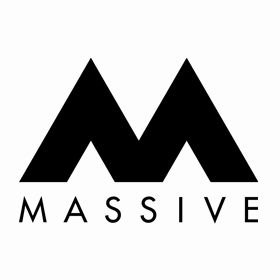
Visual Sitemap Can Be Powerful Tool in Delivering Website Value
Whether you’re looking to rebuild a new website from scratch or refine an existing one, sitemaps are vital tools to help ensure your redesigned digital presence will be thoughtfully organized and function at its best.
The Various Sitemaps Found in Web Design
There are multiple kinds of sitemaps referenced in web design, and each one serves a different audience and function.
- An XML sitemap is an effective means of improving search engine visibility and SEO by ensuring search engines crawl and index your website through including a list of URLs listed in an XML sitemap file.
- An HTML sitemap file has grown less common outside of larger websites and acts as a digital outline of a site’s URL structure to visitors. These static navigation aids provide an additional means of quickly finding different pages.
- A visual sitemap defines the structure and scope of a digital project and is an effective and broadly accepted method of website planning between design firms and their clients. Resembling a flow chart, visual sitemaps provide an illustration of a website’s structure, which delivers insights into user flow, information architecture, and content strategy.
Key Fundamentals to Getting Maximum Value from Your Visual Sitemap
As a critical element of your B2B sitemap strategy, your visual sitemap needs to be built on a solid foundation. Starting too soon or without the right preparation may lead to a visual sitemap that takes your website’s content in the wrong direction. Putting the work in ahead assures that your structure supports your strategy, and gets you on a path to maximizing your return and a simple, intuitive experience for your customers.
Starting on the Right Track: Website Objectives and Content Strategy
Before you rush into any customer experience or interface design, you need to understand the role of your website and evaluate how it can best support your B2B business needs.
Sometimes, this understanding can be distilled to prioritize key performance indicators. For instance, a website that creates the best value by generating leads will be designed with content and navigation focused on how best to deliver that goal. Similarly, if website value is better measured by product download, demo view, or form completion, then you and your design team can match content and campaigns that target those areas.
Once you have your B2B business goals identified and articulated, the work can begin to make sure the content and user experience are created to best achieve them.
Leverage Buyer Personas to Keep Focus On Primary Audience
For your website refresh or redesign to be effective, you and your design team need to keep your customers the focus of the work. When planning a digital marketing strategy, B2B tech companies should evaluate three buyer personas to help the project team validate its direction and consider key customer perspectives. These B2B buyer personas can be summarized as follows:
- Primary User: Typically, analysts, marketers, engineers and others who will be the customer end users of the product or service.
- Decision Maker: Executive-level stakeholders who ultimately choose whether a product will be purchased for the customer organization.
- Recommender: These are the managers who connect the two other groups, driving the need narrative of the Primary Users and combining it with their insights and expertise to influence the Decision Makers.
Each of these key roles in the B2B purchase journey must be targeted by your content, with smart overlaps at various points to maximize value for both sides. If your analysis is constrained by budget, time, or other factors, at minimum make sure your content planning accounts for the Primary User and Decision Maker personas. Without them, you’ll carry a much higher risk of delivering a website that struggles to deliver for your company and your customers.
Use a Content Inventory to Connect Where You Are with Where You’re Going
Now that you have your objectives identified and your personas understood, it’s time to take a deep dive into your content to evaluate and understand how your existing assets support them. Triage your content assets against your objectives and personas: Keep those that can stand as they are, rewrite or refresh what can be saved, and archive or delete what no longer creates value for your company and your prospects.
It’s rarely simple or easy, but the benefits go far beyond simplifying the picture for your B2B business and customers. Outdated or neglected content can harm your SEO rankings under incorrect terms and pull in the wrong audience. As important, the focus and determination of a detailed content inventory — and the triage that should follow — brings efficiency to implementing the site redesign.
If you can cut the website’s content you won’t need beforehand, you won’t end up migrating product pages neither you nor your customers need. In addition, you won’t carry the operating cost of serving and governing those pages well after your redesign project is over.
Content Structure and Labeling Critical to Reaching Your Prospects
There’s much more to connecting content to customers than simply creating it and putting it somewhere on your new B2B website. Deep thought and consideration need to go to how your prospects will discover and navigate through the content you’ve worked so hard to create and optimize.
Similar to the content triage before, it’s the details that count here. The more robust your information architecture and its supporting content labeling, the more effectively you can simplify each customer’s journey, helping them find what they need as quickly as possible.
Be sure to avoid directionless, generalized headings such as “blogs,” and instead decompose your website’s content to relevant categories as well as traits, including white papers, podcasts, and infographics, where appropriate. This content breakdown will empower you to surface relevant, timely content to your audience, and allow flexibility to appeal to the B2B primary personas as well as emerging opportunities.
Designing with Your Content Management System in Mind
While building an effective visual sitemap, be sure to consider the capabilities of your CMS and how well it can organize the content types you want to deliver. Today’s modern CMS platforms can easily deliver customizable menus as well as the tagging and taxonomy to support your redesigned website’s content structure. Still, there are potential governance and workflow implications, so it’s best to understand what your CMS can deliver.
Typically, a website redesign equates to structural change to how information is organized and displayed, but your CMS may be limiting. Your visual sitemap will deliver an effective strategy for your B2B company’s content, but you and your team should be sure your CMS tool is capable of supporting the execution of that strategy.
Visual Sitemap Impact Clear in Your Website Results
Of the multiple sitemaps available, a visual sitemap is unseen as far as search engines and potential prospects are concerned. Even though it functions primarily as a planning document, the efficiencies and improvements gained will be clear in your website redesign results.























